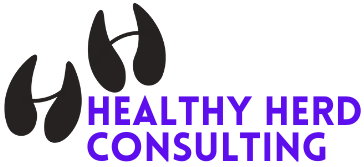Guest Contributions to The Open Sanctuary Project by Healthy Herd Consulting:
-
Every second during a resident health emergency matters. Having the correct supplies and tools at your fingertips may be the difference between life and death for the individuals in your care. In this resource, we’ll provide a list of supplies to have on-hand for resident chicken-, turkey-, duck-, goose-, goat-, sheep-, alpaca-, llama-, pig-, horse-, donkey-, and cow-health emergencies.
-
It may seem that caring for farmed animals is a never-ending list of routine tasks. In a perfect world, you would get everything on your to-do list done with ease, but, as we know, sanctuary life is anything but predictable. Because there are so many moving parts and one day never looks the same as the next, it’s imperative to have a system in place to keep track of these time-sensitive tasks, ascertain that they are completed by their deadlines, and reassign them if needed.
This resource covers the basics of creating a centralized checklist and calendar of general tasks necessary when operating a farmed animal sanctuary caring for chickens, turkeys, ducks, geese, pigs, sheep, goats, cows, llamas, alpacas, donkeys, and horses. This resource will outline and discuss only tasks that happen monthly or less frequently.
-
Now that we’ve discussed keeping track of tasks at farmed animal sanctuaries that happen monthly or less frequently in Keeping Track of Sanctuary Tasks: Part 1, it’s time to tackle keeping track of the more frequent tasks. This includes daily, X times daily, every other day, every X days, weekly, every other week, X times per month, and all of the other seemingly endless possible frequencies in between.
For this resource, we’ll sort the tasks into four categories: healthcare tasks, feeding tasks, cleaning tasks, and miscellaneous tasks. Depending on your organization, you may also want to add additional sections for administrative, financial, and human resources tasks.
Much like Part 1, this resource will guide and empower you to create your own centralized record of these more frequent tasks. We’ll discuss how to communicate the information, develop contingency plans if tasks do not happen, and troubleshoot pitfalls that may hinder success or follow-through.
-
Coordinating the helping human hands at your animal sanctuary often takes more planning than you may initially anticipate. There usually comes a tipping point when it doesn’t make sense for one person (or team of people) to complete all the sanctuary’s tasks together. Instead, splitting the shelter responsibilities and caregiving duties into “shifts” for their staff and volunteers is more efficient.
In this resource, we examine the common ways shift duties are divided and the various factors you may need to consider when creating the task list. Additionally, we’ll explore training people on the shift, collecting feedback, shift burnout, and how/when to tweak the shift’s duties.
-
Sanctuary operators know that no two days are the same. Providing a high level of individualized care for nonhuman animals requires significant communication between humans. The variables are seemingly endless, from personnel changes to task assignment, weather alerts, appointments, low supplies, facilities concerns, resident movement, medication, diet and treatment changes, resident health concerns, and more. Many sanctuaries choose to communicate some of this information via whiteboards. This resource provides guidelines for small and large sanctuaries as to what types of information may work best for whiteboard communication, common pitfalls, and examples of different whiteboard set-ups.









